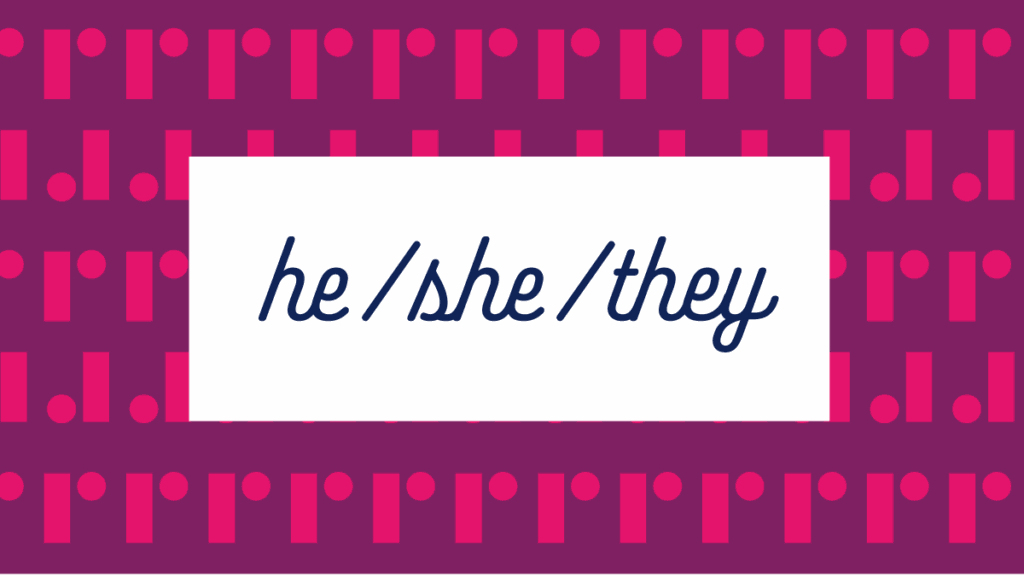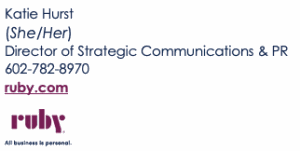
Preserving and perpetuating real, meaningful human connections is the mission of Ruby — and it takes work. From hiring the right people passionate about connecting with others to cultivating a community of empowerment to go above and beyond for the customer, we’ve learned over the years that investing in our company culture fuels the success of our business and that of our customers.
But there’s something even deeper than hiring the right people and having fun at work that drives a culture of connections — it’s being able to be your true self and sharing your humanity with others.
What is the Pronoun Project?
Ruby is all about growing and celebrating our diverse people-powered culture so, in 2019, Ruby’s Learning and Development and Employee Experience teams launched the Pronoun Project.
An annual, company-wide initiative, the Pronoun Project encourages Rubys to share their pronouns during Pride month and beyond. Email signatures, social media profiles, and desk nameplates are just a few of the digital and physical spaces that more than 10% of the Rubys chose to display their pronouns last year.
Why are Pronouns Important?
Gender pronouns (ex. She/her/hers) are words a person would like used when others talk to or about them. You can’t always know what an individual’s pronouns are by looking at them, so asking and using the correct pronouns shows your respect for their identity. Encouraging the use of proper pronouns and showcasing them in email signatures, etc. builds an inclusive, equitable culture.
Want to Start a Pronoun Project at Your Company?
Our friends at Culture Amp have an excellent blog post outlining several steps companies can take to encourage the use of pronouns. A few ways we encourage our team to share their preferred pronouns are:
- In email signatures
- Social profiles (LinkedIn, Facebook, Twitter, Instagram)
- Status or profile name in team chat/communication tools
- In bios or “about me” descriptions


Of course, listing pronouns is only the first step — next is to use them correctly during communication. Pay attention to the pronouns team member’s share and use. Not sure? Don’t be afraid to ask. A simple, “What are your gender pronouns?” or “Can you remind me which pronouns you prefer?” is a great first step to building a culture of inclusivity.



